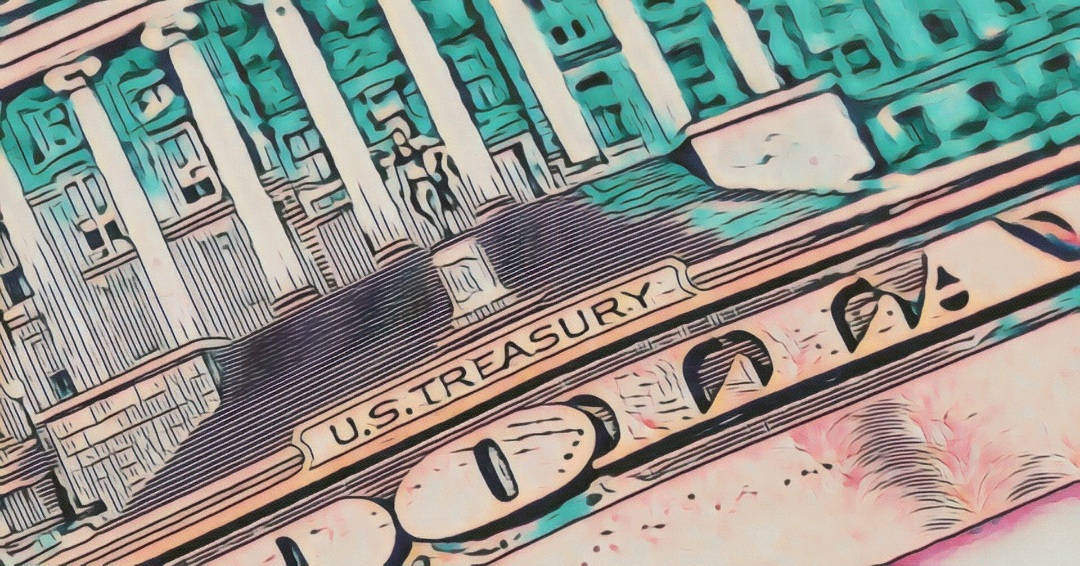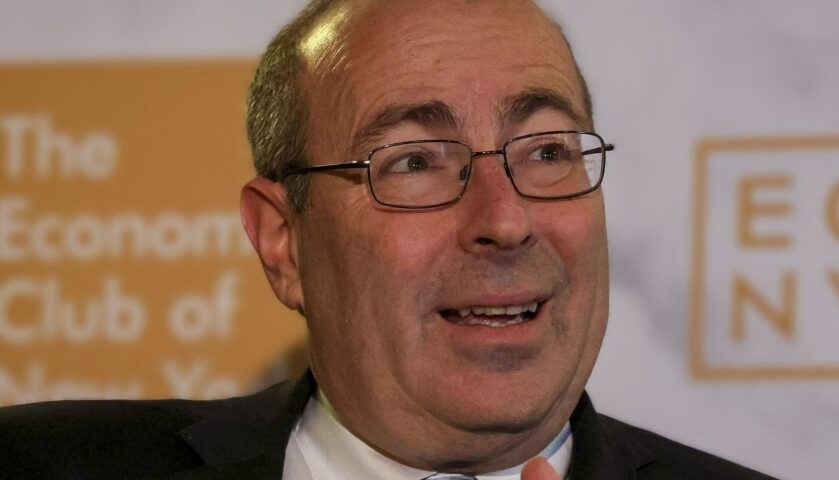In a landmark decision aimed at addressing the burgeoning budget deficit, the United States Treasury recently unveiled plans to conduct the biggest-ever series of bond auctions. With the headline event being a colossal five-year, $70 billion auction scheduled for April, stakeholders eagerly await forthcoming announcements regarding increased auction sizes across multiple maturity categories within the upcoming three-month period, specifically concerning two-year and five-year treasury notes.
In recent weeks, the U.S. Treasury held auctions for these maturities at their highest volumes ever – $60 billion for two-year notes and $61 billion for five-year notes. These figures match the largest single auction for any Treasury note or bond.
Additionally, it’s expected that there will be further increases in upcoming quarters, potentially reaching as high as $70 billion for five-year notes in April.
This rapid increase in supply has raised concerns within the financial industry because we haven’t seen such large and fast growth during periods of economic expansion before. Despite strong demand so far, experts like William O’Donnell from Citigroup warn that challenges might arise if inflation does not subside and expectations for rate cuts do not materialize.
Higher supply without sufficient demand can drive yields upwards, exacerbating issues with inflation.
In addition to domestic factors, international conditions contribute to increased public debt supply among major developed economies. According to a Goldman Sachs report, these growing debt levels may put upward pressure on yields; however, the sensitivity of yields to public debt has diminished due to higher global private-sector savings over time.
Lastly, the increasing debt issuances are primarily attributed to the federal budget deficit along with higher interest expenses on existing debt. Furthermore, the Fed’s decision not to rollover $60 billion per month of its Treasury holdings adds to the requirement for selling more securities to private investors each month.
Economic Crossroads:
This strategic move coincides with an ongoing debate surrounding the U.S.’ capacity to settle obligations while simultaneously grappling with Federal Reserve Chair Jerome Powell’s commitment to maintaining higher interest rates. Economists and analysts alike voice concerns over the ripple effects stemming from these interconnected issues and the broader implications for America’s fiscal landscape.
Banking Sector Struggles:
Amid the prevailing economic turmoil, the banking sector finds itself in precarious waters, exhibiting signs of distress. A prominent illustration of this predicament is evident in New York Community Bancorp (NYCB), whose stock price dropped dramatically by 40% following the announcement of disappointing Q4 earnings and suspension of dividend payments. Ironically, NYCB had served as a vital player in resolving the 2023 crisis by absorbing Signature Bank assets but currently encounters formidable hurdles necessitating deft maneuvering.
Analogous cases abound globally, intensifying fears of contagion and escalating apprehensions pertaining to financial institutions’ susceptibility to solvency crises. Compounded by persistent inflation, lingering geopolitical strife, and mounting trade disputes, these threats amplify the probability of bank runs recurring. The fragile equilibrium maintained between containing inflation, settling sovereign debts, and ensuring liquidity provision assumes paramount significance against this backdrop.
Policymakers face a daunting task balancing the urgent demands posed by the faltering banking sector and safeguarding long-term macroeconomic stability. Erratic fluctuations in asset prices and collateral values adversely impact borrowers and lenders alike, jeopardizing credit flows and stifling investment activities—the lifeblood of economic development. Moreover, wavering trust in financial intermediaries can engender panic, prompting customers to rapidly withdraw deposits, thus transmitting stress throughout the entire financial ecosystem.
Within this tumultuous milieu, authorities must assiduously examine the appropriate application of regulatory tools and emergency measures designed to preserve market integrity and thwart incipient bank runs. Measures encompassing capital buffers, enhanced supervision, targeted liquidity provisions, and contingency planning constitute integral components of prudential frameworks aimed at reinforcing financial resiliency. By employing judicious combinations of these instruments, regulators strive to bolster market participants’ confidence and mitigate cyclical imbalances threatening the foundations of sustainable growth.
However, striking the right chord between decisive interventionism and restrained vigilance requires astute judgment calls and meticulous calibration. Excessive reliance on exceptional powers can perpetuate moral hazards, fostering complacency amongst market actors who presume implicit guarantees covering impaired liabilities. Conversely, insufficient engagement may leave festering wounds untreated, ultimately culminating in systemic meltdowns with devastating fallouts. Thus, walking this tightrope mandates nimble footwork, seamless coordination, and unwavering resolve from all relevant stakeholders, particularly central banks and finance ministries entrusted with steering the ship through tempestuous seas.
While the specter of renewed bank runs looms menacingly, proactive preparedness coupled with timely responses holds the key to averting catastrophic outcomes. Harnessing lessons gleaned from historical precedents, contemporary research insights, and technological innovations promises fertile grounds for cultivating robust defense mechanisms capable of forestalling destabilizing feedback loops. To paraphrase John F. Kennedy, “Our most dangerous moments come just after we’ve overcome a challenge.” Hence, remaining eternally vigilant in monitoring nascent threats and steadfast in our convictions shall enable us to weather inevitable storms lurking ahead in the annals of financial history.
Bailout Discourse:
As the situation progressively evolves, discussions revolving around potential government intervention via inflations taxes to salvage distressed banks remain open-ended. Should conditions worsen significantly, contemplation might shift towards reassessing already-planned interest rate adjustments. Implementing inflation taxes would erode the real purchasing power of money, thereby easing certain financial burdens. However, this method comes with consequences, often sparking controversy due to its regressive nature, which tends to disproportionately impact lower-income individuals.
Conclusion:
Given the current economic environment, characterized by escalating inflation and potential banking sector vulnerabilities, allocating a fraction of one’s wealth to alternative assets, such as Bitcoin, could serve as a protective measure. Historically, Bitcoin has demonstrated appreciation during periods of inflation and inflation expectation shocks, showcasing its potential as an effective inflation hedge.
Unlike traditional fiat currencies subject to manipulation by central authorities, Bitcoin operates independently, free from interference by government entities or financial intermediaries. This autonomy allows Bitcoin to maintain its inherent value, shielding investors from the detrimental impacts of rampant inflation and aggressive monetary policies.
By incorporating Bitcoin into a diverse investment portfolio, individuals can safeguard themselves against the cascading ramifications of currency devaluation and potential bank runs. Simultaneously, awareness of the associated risks and rigorous research are imperative before venturing into cryptocurrency investments. Ultimately, embracing novel avenues, such as Bitcoin, equips investors with the necessary tools to confidently traverse turbulent economic landscapes, preserving hard-earned wealth during volatile times.




